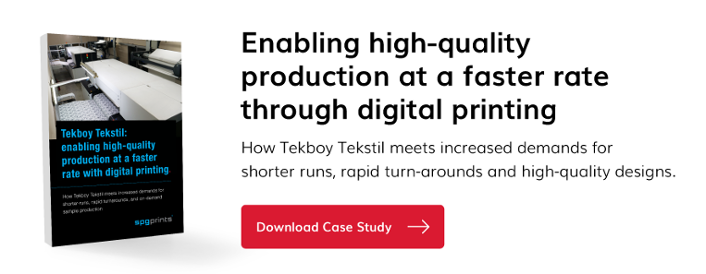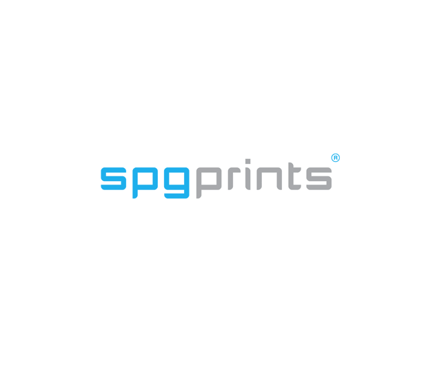Single-pass and multi-pass digital textile printing: what’s the difference?
The difference between a single-pass and multi-pass scanning printer is in the way ink is distributed onto the fabric. In multi-pass scanning printing, the printheads are mounted to a carriage that moves from left to right and right to left over the width of the fabric. After moving along the whole substrate-width, the fabric is moved forward with half the carriage depth (2 pass printing) or a quarter of that (4-pass printing) and start printing another horizontal bar, but this time they move from right to left. Hence the name “scanning” printer.
In single-pass printing, however, there is no moving carriage at all. The printheads are mounted over the full width of the fabric on a fixed printbar, one for each color. The fabric moves under those bars with a constant speed, so the image is built up in one stroke (hence 'single pass') of 1 vertical image bar over the full width.
How to choose between single-pass and multi-pass printing
When making the transition to digital textile printing, you need to evaluate if either a multi-pass or single-pass printer is the most suitable option for your production process. How do you make that decision and which parameters should you take into account? Answering the questions that I specified below will help you make the right decision.
1. Do you want to print less or more than 5 million meters of fabric per year?
A single-pass digital textile printer requires a significant investment but will give you high printing speeds and a low price per meter in return. For that reason, a single-pass textile printer will only return on its investment if you print large quantities of fabric with it. A multi-pass digital textile printer, however, is also suitable for textile printers that need less production capacity per month or year.
In general, I would advise you to invest in several multi-pass textile printing machines if you want to print less than 5 million meters of fabric a year on the new printer. As a rule of a thumb you can count on 1 million linear meters per scanning printer, so you required capacity determines the number of printers you need. Do you want to print more than 5 million meters of fabric with the new machine? Then answer yourself the following two questions:
2.How much money can you invest in a digital printing setup?
As said before, a single-pass digital textile printing machine requires a significant investment. That is due to a large number of print heads that are incorporated into the machine. This will enable high-speed and high-quality printing, but also comes with a price tag. However, because you will be printing a large amount of fabric, single-pass printing provides you with the lowest price per meter. So ask yourself the question: how much money do you want to invest and does that amount enable you to invest in a single-pass machine?
If not, you could decide to invest in multiple multi-pass printing machines. This would still enable you to meet your capacity requirements but gives you the opportunity to spread out your investment by spreading out the purchase over a longer period of time. Of course, another aspect to consider is that you need more space for multiple multi-pass printing machines.
3. How much flexibility do you need?
Do your customers require you to print on a large variety of fabrics and therefore have a high level of flexibility in your printing process? Then it’s better to choose for multiple multi-pass scanning printers instead of one single-pass machine. Using multiple multi-pass machines enables you print on several fabric qualities simultaneously, and you can even choose to use one of your printers to print reactive ink on cotton and one of your other printers to print for instance acid ink on silk. On top of that, if you’re experiencing stand-still on one of your multi-pass printers, you still have the other ones to run your production on. When a single-pass printer breaks down, your whole production is on a hold.
Growing your business with single- or multi-pass printing
Would you like to know how other textile printers who choose between single- or multi-pass printing experienced the use of their new machine? Two of our customers had to make the same choice when transitioning to digital textile printing. Adalberto Estampados wanted to keep up with the growth of fast-fashion and meet their customer’s demands. Turkish printer Tekboy Tekstil, on the other hand, wanted to meet demands for shorter-runs, rapid-turnarounds, and on-demand sample production.
Both found their solution in a different printing technique. Adalberto Estampados managed to increase their production efficiency and expand their design offering with single-pass printing. Learn more about their success story in the case study. Tekboy Tekstil, contrarily, now produces high-quality designs at a faster rate with multi-pass textile printing. You can read more about the benefits of multi-pass printing in the Tekboy case study. Download the case study here:






